Creating a fantastic home office setup is a fantasy for every working individual. A proper desk, great color, and a desk lamp to add flavor to your structure is everyone’s perfect home office dream.
On the other hand, a single sight of Fire is all it takes to completely derail your dream setup and investment.
News of fire-ruining office setups is everywhere. Most of the information claims desk lamps as one of the reasons for that.
So, if you’re considering getting a desk lamp or already have one, you’ve come to the perfect place.
Here, you will learn whether your desk lamp catches Fire or not and, if yes, how to prevent it from Fire.
Desk lamps are prone to catching Fire, like any other electronic item. Traditional desk lamps, such as incandescent and halogen, are more dangerous to Catching Fire. Newly constructed LED and CFL lights are safer than their conventional equivalents.
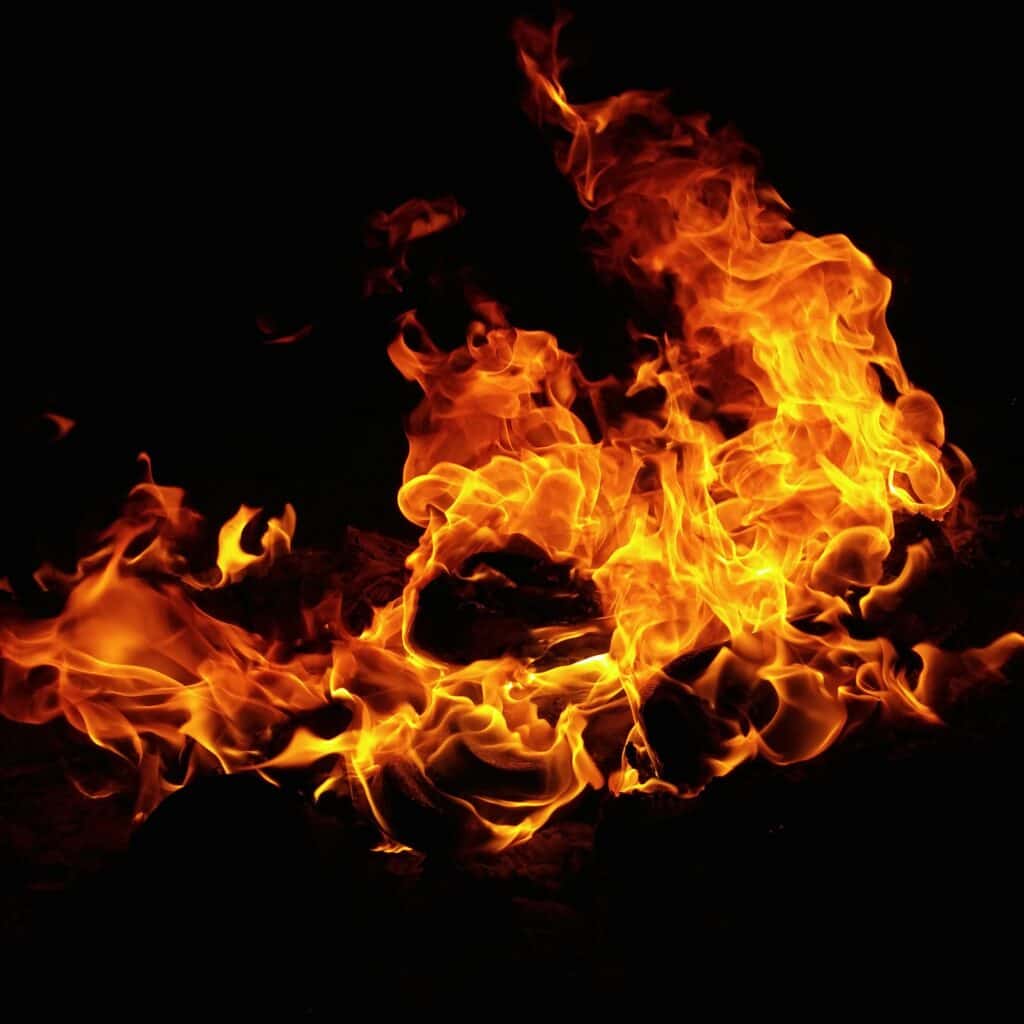
Let us dig deeper into the dangers of a desk lamp catching Fire based on its type and the risks of leaving your light on overnight.
Table of Contents Show
Causes for Desk Lamps to Catch Fire
Your desk lamp might catch Fire for various reasons, ranging from the type of light to how long it has been turned on.
Let’s look at all the potential causes of your desk lamps Catching Fire.
1. Leaving Desk Lamps on Overnight
While many desk lights catch Fire, this is one of the most common reasons. Most desk lamps catch Fire when they are left on for a prolonged period.
Many bulbs will overheat if left on for a more extended period. The quantity of electrical and thermal energy produced by the bulbs overheating raises the risk of a Fire.
On the other hand, different low-voltage bulbs can protect you from these dangers, as we’ll see in the following sections.

2. Impulse Noise
Another factor that contributes to the majority of electrical fires is impulse noise. Impulse noise is the spike in the electrical energy in electrical devices.
Sudden lightings and sudden power mainly cause impulse noises after a power outage.
The possibilities of the rapid flow of electrons rise due to a spike in electrical energy. This leads to high heat and electrical power production, increasing the chances of Fire.
3. High Flammable Items Kept Closer to the Desk Lamps
Flammable items, such as clothing, paper, or even a wide shade on a lamp, might enhance Fire risk. When these materials come into contact with a desk lamp, they can catch Fire.
These items quickly catch Fire due to their high flammability. Because these things are frequently used in your home office, you should proceed cautiously while storing them near your desk lamps.
4. Blinking or Flickering Lights
Flickering lights are another source of Fire in your desk lamp. Faulty switches, loose bulbs, or high-voltage electricity frequently cause flickering bulbs.
As a result, flickering lights either overheat or emit electrical energy onto the desk lamp’s external surface, increasing Fire risk.
5. Fault in Wiring
One of the reasons for flames is a wiring failure. For example, an electrical shock might result from a breakdown in the desk lamp’s wiring.
A wiring fault is defined as damage or a hole in the wiring. A fault in wiring happens when one wiring crosses another, which causes noise called cross talk. Here one wire erupts the electrical energy on another.
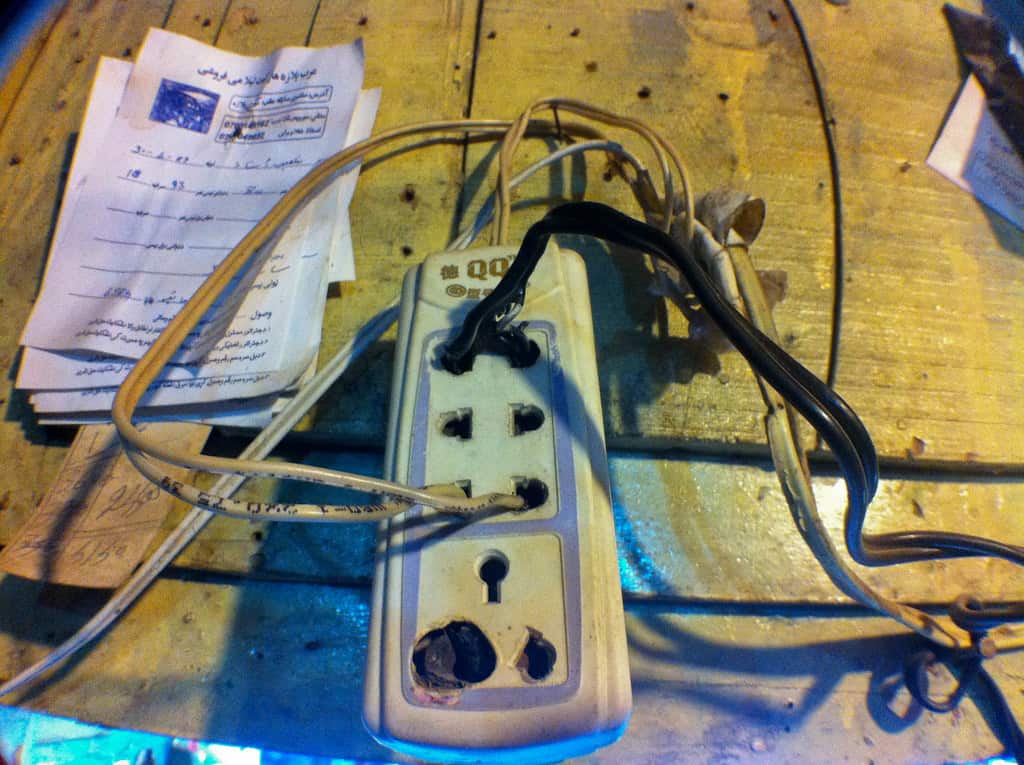
Due to the movement of electrical energy out of the circuit, a short course is usually caused by a wiring fault.
In addition, due to wire breakage, a fast flow of electricity can sometimes spark a Fire in a wire. As a result, there is a significant risk of Fire.
6. Low-Quality Bulbs
Bulb prices for low-quality bulbs are frequently lower. As a result, many individuals buy it to save money. This bulb, on the other hand, increases the risk of Fire.
Low-quality bulbs offer several drawbacks. Overheating, loose-fitting, and even transmitting power outside the bulb are a few examples. The adverse effects of such a bulb can result in a Fire.
Let’s look at all the other drawbacks of low-quality bulbs.
- Due to poor quality, there is a higher risk of electric shock.
- Flickering and darkening of the surface are common issues in low-quality bulbs.
- Low-quality bulbs also have an impact on the desk lamp’s wiring. The intense heat of a low-quality bulb has a significant risk of destroying wires and creating holes in them.
- The color temperature of a low-quality bulb is too hot for your eyes. Generally, the appropriate color temperature for eyes is 2500-4900K. A low-quality bulb surpasses this range affecting the eyes.
7. Overheating Bulbs or Bulbs That are Very Flammable
Finally, and most importantly, the bulb you use determines the Fire safety of your desk lighting.
Different bulbs have different qualities and use different amounts of energy and heat-generating capacity.
When bulbs are overheated, they produce more heat energy than electrical energy.
Therefore, when a bulb overheats over its rated wattage, it increases the risk of explosions and fires.
The incandescent bulb and several low-quality bulbs generate high heat.
Most Dangerous Bulbs That Causes Fire
Incandescent bulbs are the most dangerous of all bulbs. Different low-quality bulbs available in the market are also dangerous.
Though any bulb can catch Fire due to external factors, incandescent bulbs emit more heat, which raises the risk of a Fire.
First, let’s look at the reason why incandescent bulbs are dangerous among different bulbs.
- Incandescent bulbs only convert 5% of electricity into electrical energy and the rest into heat energy, which causes the bulb to overheat, increasing the Fire risk.
- These bulbs are traditionally made bulbs that lack heat dissipation features.
- The life span of an incandescent bulb is short. As a result, it is easily burnt out if used frequently, increasing the risk of overheating and Fire.
- They operate at a high voltage level, which raises the risk of a short circuit, resulting in a Fire.

How Hot can a Desk Lamp Get?
The appropriate color temperature for a desk lamp is 2500-4900K, and the surface temperature should not exceed 250 degrees Fahrenheit.
The wattage, voltage level of energy, and bulb type contribute to the bulb’s heat output.
Some bulbs generate a lot of heat and electrical energy, which might lead to a Fire.
Let’s look at the many bulbs on the market, their energy usage, and their average life span.
| Type of Bulb | Energy usage | Average Lifespan | Color Temperature (in Kelvin) | Filament Temperature | Surface Temperature |
|---|---|---|---|---|---|
| 1. Incandescent Light Bulb | 60-100 Watts | 700 to 1200 hours | 2700K to 4100K | About 4,600 Degrees Fahrenheit | 150 to 250 Degrees Fahrenheit |
| 2. Halogen Incandescent Light Bulb | 15-45 Watts | 2,000 to 4,000 hours | about 3000K | About 4,500 Degrees Fahrenheit | about 120 to 200 Degrees Fahrenheit |
| 3. Compact Fluorescent Bulb (CFLs) | 13-15 Watts | about 8,000 hours | about 3500K | Filaments are not present | 100 Degrees Fahrenheit |
| 4. LED Light Bulb | 6-8 Watts | 40,000 to 50,000 hours | 2700 K to 3000K | About 300 degrees Fahrenheit New generation LED bulb doesn't have filament. | 140 to 212 Degrees Fahrenheit |
Note: If the bulb’s wattage exceeds the socket’s wattage limit, it will likely overheat and catch fire. Furthermore, there is a risk of fire if its surface limit surpasses its range.
Consider a 60-watt incandescent light if the energy used exceeds 60 watts. Then, the bulb overheats, increasing the likelihood of a Fire.
The same may be said for the surface temperature, which should not exceed 250 degrees Fahrenheit.
If the surface temperature rises over that threshold, the risk of a Fire outbreak increases.
The appropriate color temperature for a typical bulb is 2500-4900K in terms of color temperature.
As a result, when color temperature surpasses the range, it negatively affects the eyes and promotes surface temperature.
Note: The wattage of a bulb can affect the surface temperature, average life duration, and color temperature.
How to Prevent the Desk Lamps Fire?
Despite the increased risk of Fire, a desk lamp is one of the essential office accessories. It has a wide range of applications in any home office.
As a result, due to its critical importance, it should be used with caution to ensure that its functions are carried out safely.
Some of the best possible ways to the prevention of your desk lamps from Fire are:
1. Turning off the Desk Lamps When Not in Use
This is one of the practical methods to avoid different accidents that can cause by desk lighting.
Most of us use desk lamps when natural light is scarce, mostly at night.
The best way to avoid the lamp overheating is to turn it off when there is enough light from the sun and when it is not in use.
Furthermore, it should be turned off once you leave the room or after you finish your task.
2. Using a Volt Guard or Disconnecting your Desk Lamp’s Plug During a Power Outage
In many electronic devices, impulse noise is the most prevalent cause of Fire. One can use a volt guard to manage voltage levels in electrical appliances to prevent fires caused by impulsive noise.
Wired desk lamps are the most common source of impulse noise. This is due to the practice of plugging the switch even when there is no power. In addition, the fast arrival of power amplifies the impulse noise.
Hence, disconnecting the desk lamp or using a volt guard during a power outage is the best solution to avoid impulse noise.
You can buy volt guard on Amazon.
3. Keeping Flammable Items Away from the Desk Lamps
One should keep different flammable items like clothes, paper, books, etc., away from the desk lamps.
For utmost safety from Fire, you should always keep desk lamps away from these items. But unfortunately, most people have a habit of covering desk lamps with flammable fabrics, which can cause Fire outbreaks.
You can clean your desk lamp regularly rather than covering it with flammable fabrics.
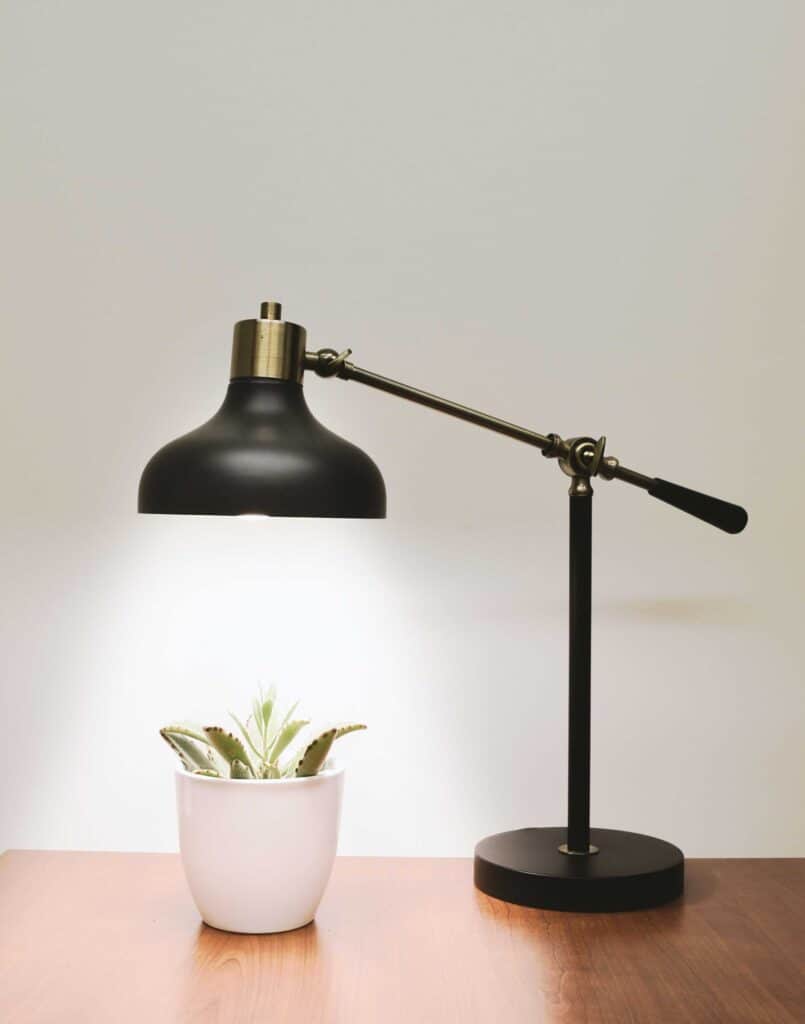
4. Use a Light Bulb of the Correct Type and Wattage
There are different bulbs available in the market with other properties and wattage.
Therefore, bulbs such as incandescent, which produce more heat energy, should always be avoided.
It would be best to choose a bulb with more electrical energy than heat energy, which prevents bulbs from overheating. This results in less chance of Fire outbreaks.
For a home office, a light bulb with a wattage of a 4W-6W LED bulb is ideal, equivalent to 40W-60W of an incandescent bulb.
Since LED and CFL bulbs use less energy, they are ideal for your home office.
5. Make Sure your Bulbs in the Desk Lamp are Screwed Properly
Another way to avoid a Fire in your desk lamp is to ensure the bulb is placed correctly and screwed.
If your bulb is not properly screwed in, it will overheat, and electrical energy will pass through the desk lamp’s external surface. Both conditions have the capability of igniting a Fire.
As a result, double-check how your desk lamp’s bulb is put regularly.
Tips to Prevent Bulbs from Overheating
After going over several causes for desk lamps, bulb overheating is the primary and most common cause. The risk of an accident and Fire eruption grows as the bulb heats up.
There are several methods for keeping your bulbs from overheating. The following are a few suggestions:
- Check the voltage level of an electric circuit with a multimeter regularly.
- Replace the bulb if it begins to flicker or if the surface becomes dark.
- Keep your desk lamp away from heat sources and hot surfaces.
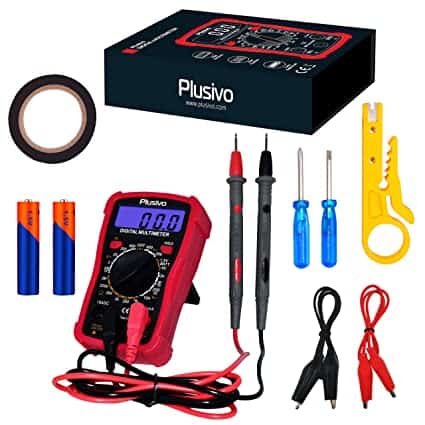
Buy a multimeter on Amazon.
Safest Bulb for Desk Lamps
As I explained previously, it is critical to utilize the correct bulb.
The term “correct type of bulb” refers to a bulb with the appropriate wattage, producing less heat and more electrical energy.
The incandescent bulb is one of the safest bulbs for the eyes. However, this type of bulb produces a high amount of heat energy.
As a result, the bulb overheats, increasing the chances of Fire.
Among all types of bulbs, currently, LED bulbs are safest due to their less energy usage when it comes to safety from Fire.
Reasons why LED Bulbs are Safest Among Different Bulbs
The following point clarifies why LED bulbs are safest than their traditional counterparts.
- LEDs are energy efficient and have a lower surface temperature. As a result, they’re generally excellent.
- These bulbs include epoxy lenses to prevent breakage and burnout.
- In comparison to incandescent lights, LED bulbs utilize 75% lower power.
- LEDs endure longer than standard bulbs and do not overheat when left on for lengthy periods.
If you want to know more about choosing the best lighting for your home office. Do check How to choose desk lighting for home office?
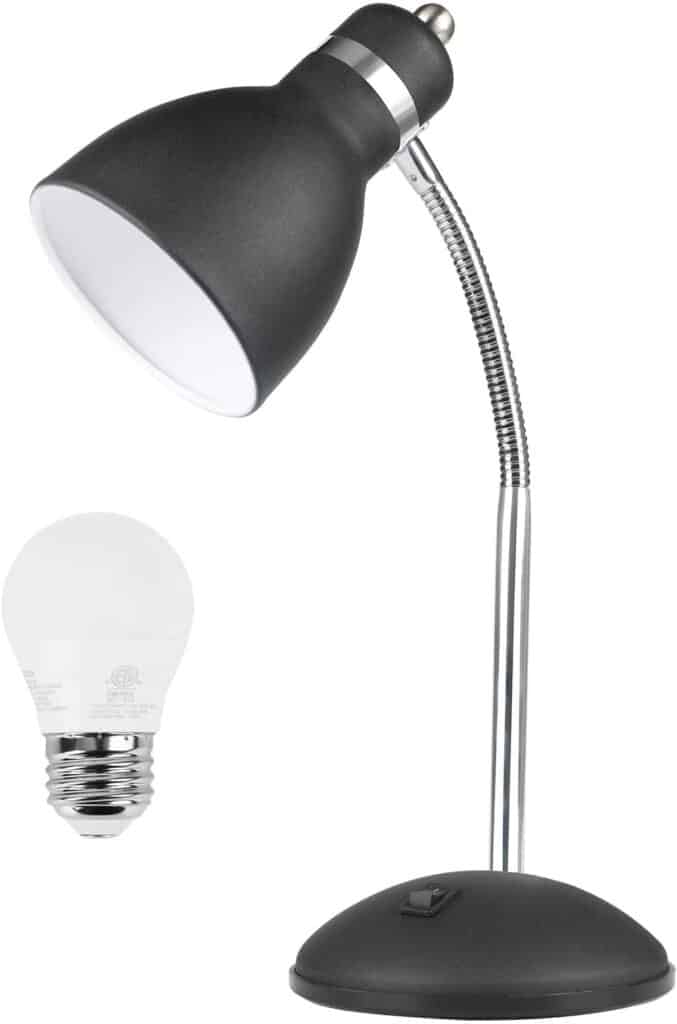
Can LED Lamps Catch Fire?
LED lamps are not flammable. As a result, even if you leave your LED lamps overnight, they are less likely to catch Fire.
LED bulbs do not produce enough heat to catch Fire due to their low energy consumption and low heat energy.
On the other hand, Cheaper LED bulbs lack heat dissipation properties, increasing Fire risk. Investing in high-quality LED bulbs will thus be beneficial in preventing fires.
LEDs are less likely to cause a Fire; however, LEDs can have some electrical failures sometimes. There are two main reasons for LED failure.
1. Electrical Overstress Damage (EOS)
Electrical Overstress, or EOS, is a failure when a device is exposed to too much voltage, current, or power. EOS may damage a component in various ways, resulting in visible evidence of damage or failure characteristics.
Like other semiconductor components, LEDs have maximum voltage, current, and power requirements.
EOS can be caused by exceeding the maximum current or voltage thresholds.
A current or voltage transient that occurs concurrently with an EOS event might create localized heat, which can lead to EOS failure.
2. Electrostatic Discharge (ESD)
The release of static electricity when two items come into touch is known as electrostatic discharge (ESD).
The jolt we experience when we walk across a carpet and touch a metal doorknob and the static electricity we feel after drying clothing in a clothes dryer are both examples of ESD.
Devices with semiconductors, LEDs, and LED drivers, can easily be destroyed by a few volts of electrostatic discharge.
Static electricity and surge voltage can damage LED products. In addition, ESD may harm LED bulbs, causing them to lose their reliability.
Precautions should be considered when working with LED lights.
- Use wristbands, conductive clothing/shoes/floor mats to reduce static charge.
- Flooring should be made of conductive materials to reduce static charge.
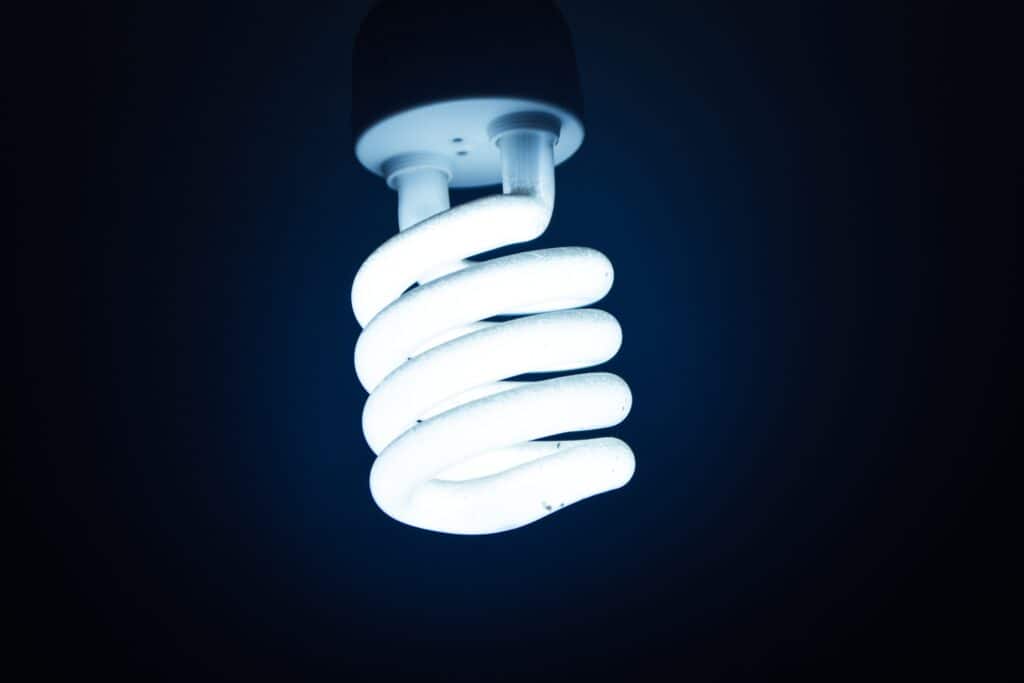
What to do if my Desk Lamp Catch Fire?
Your desk lamp may catch Fire even if you take all the necessary precautions. Fires happen by accident, and they can happen deliberately or accidentally.
Regardless of Fire outbreaks, there are various strategies to mitigate severe Fire damage using multiple methods. For example, if your desk light catches Fire, the methods listed below will come in handy.
1. Turning Off the Switchboard
Turn off the main switchboard first if your desk lamp catches Fire. A desk lamp’s Fire is an electrical Fire.
As a result, turning off the switchboard stops power flow, reducing the risk of damage.
Even if your desk lamp is wireless, turning off the switchboard reduces the outburst of Fire.
For instance, if your desk lamp catches Fire and is close to other electrical devices with plugged-in sockets.
Due to the active flow of electricity on that device. As a result, always turn off the switchboard after any Fire breakout.
2. Use Water Carefully
We use water to put out the Fire as soon as it starts. On the other hand, a Fire in a desk light is an electrical Fire.
As a result, using water to put out electrical fires increases the risk of getting an electric shock.
Only use water after adequately shutting off the switchboard.
3. Use a Fire extinguisher
Fire extinguishers can be a helpful tool rather than relying on water to put out a Fire.
A Fire extinguisher contains various fire-fighting chemicals that will aid in the extinguishment of the Fire.
Always use a Class C Fire extinguisher to put out an electrical Fire.
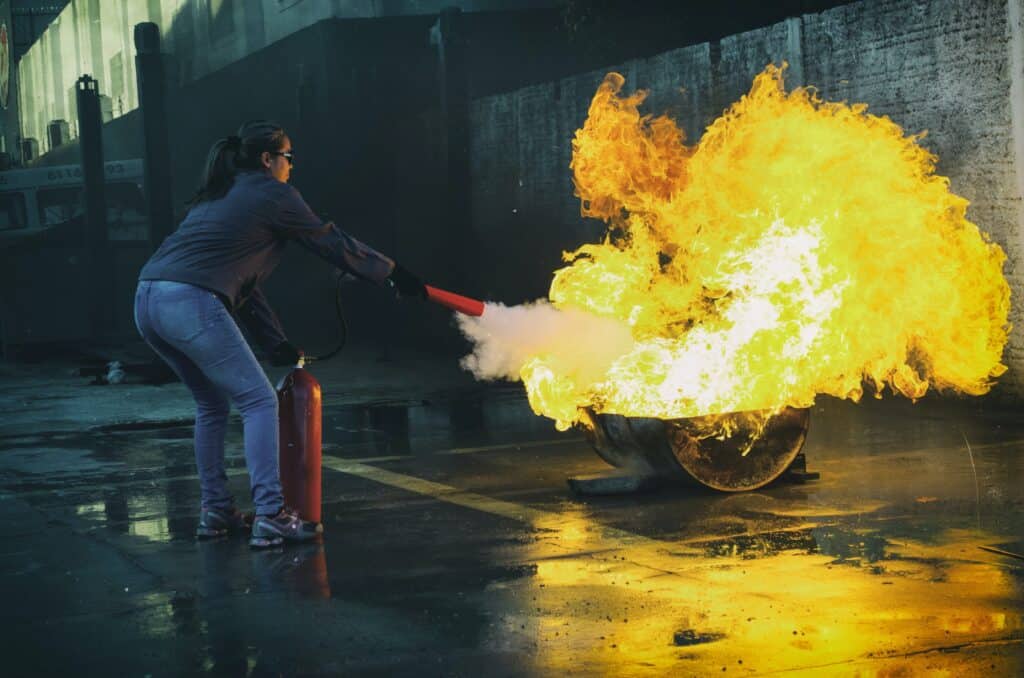
Buy this Fire extinguisher on Amazon.
4. You can Use Heavy Fabric or Sodium Bicarbonate
Heavy blankets or materials that do not easily catch Fire are examples of heavy fabric.
This component cuts off the oxygen supply to the desk lamp, preventing fires. On the other hand, these fabrics are only helpful when the Fire is tiny.
If the Fire is tiny, sodium bicarbonate is just as valuable as heavy fabrics.
You can find sodium bicarbonate on Amazon.
How to Use Sodium Bicarbonate After a Fire Outbreak?
Step 1: Add sodium bicarbonate to the bucket before pouring the water.
Keeping sodium bicarbonate on hand before adding water can produce a large foam.
Step 2: Pour in some vinegar, a diluted version of acetic acid that helps put out fires.
You can only use sodium bicarbonate. However, vinegar can assist put out a Fire more quickly.
Step 3: To the vinegar and baking soda mixture, pour water.
Step 4: Carefully pour the water containing the solution into the burning lamp.
Disclaimer: Use these chemicals with caution as vinegar and sodium carbonate can be harmful to your eyes. Moreover, keep this away from your children, and the solution of these chemicals is not for eating.
5. Contacting Fire Brigades
If the Fire slips your control, call the Fire department as soon as possible. During an outbreak, Fire departments provide emergency services that lead to practical assistance.
If you are unsure of other options, the most reliable solution for Fire outbreaks is to call the Fire brigade.
Find out the contact details of the U.S Fire Administration in case of emergency.
Frequently Asked Question
Can a Burned-Out Bulb Cause Fire?
Yes, the burned-out bulb causes Fire.
Although the bulb won’t get turned on, its surface has high heat energy, and the bulb is burned out due to overheating or uneven electrical power.
Therefore, there is a high risk of the bulbs Catching Fire.
Will a Table Lamps Bulb Catch Fire if Placed in Wooden and Glass Furniture?
Table lamps will catch Fire even if they are kept in wooden or glass furniture.
The Fire resistance features of hardwood and glass furniture will not assist the desk lamp in avoiding Fire because the Fire is circulated in wires and bulbs.
3. If Light Bulb is Dusty, is it Likely to Cause Fire?
Light bulbs with dust on them are less prone to catch Fire.
The most common light bulb in your home with the least quantity of dust may not cause a Fire.
However, light bulbs in a construction firm or a wood sector surrounded by dust may be flammable.
Final Takeaways
A Fire breakout is an unavoidable occurrence that can occur at any time and under any conditions. A desk lamp is one of the electrical gadgets with a significant Fire danger.
However, with adequate care and precaution, one can minimize such epidemics.
Always double-check that you’re using the correct type of bulb, that you’re using the correct wattage, and that you’re not using any other fire-reactive materials near your desk lamp.
Also Read: What are the Chances of Laptop Catching on a Fire?


